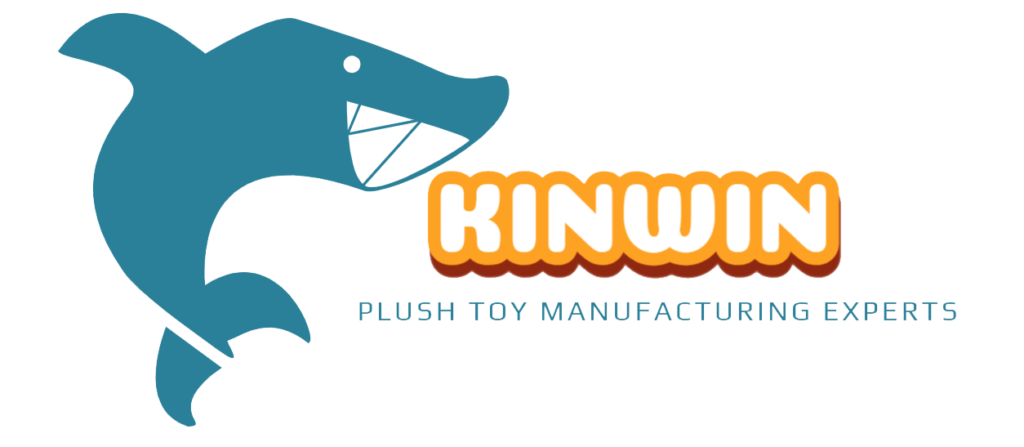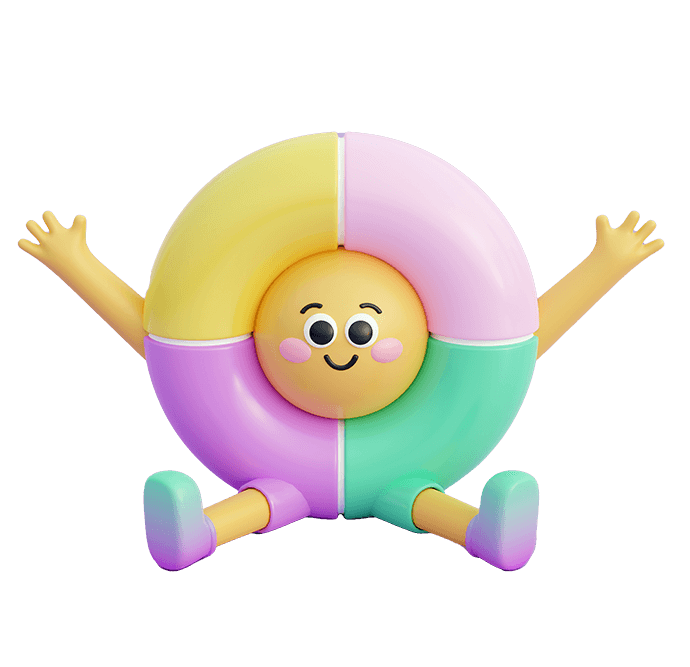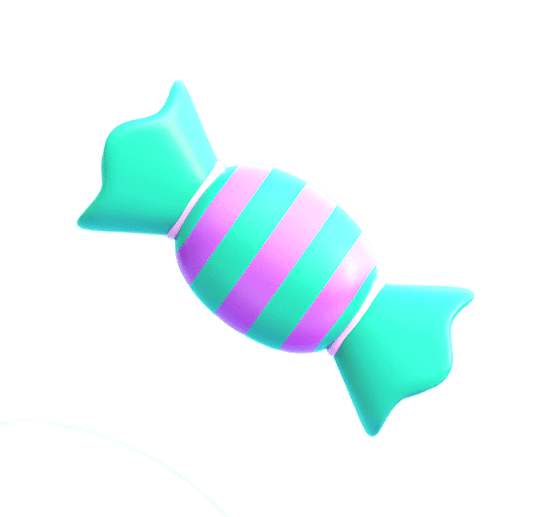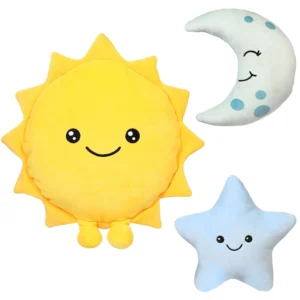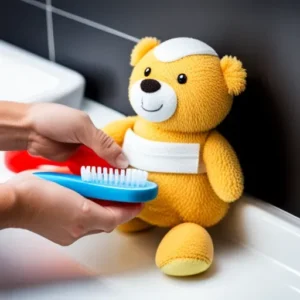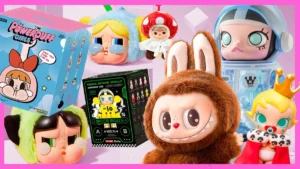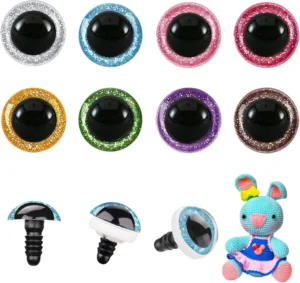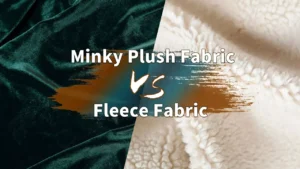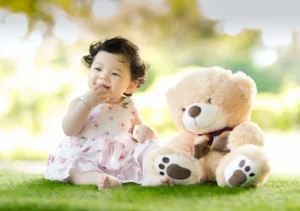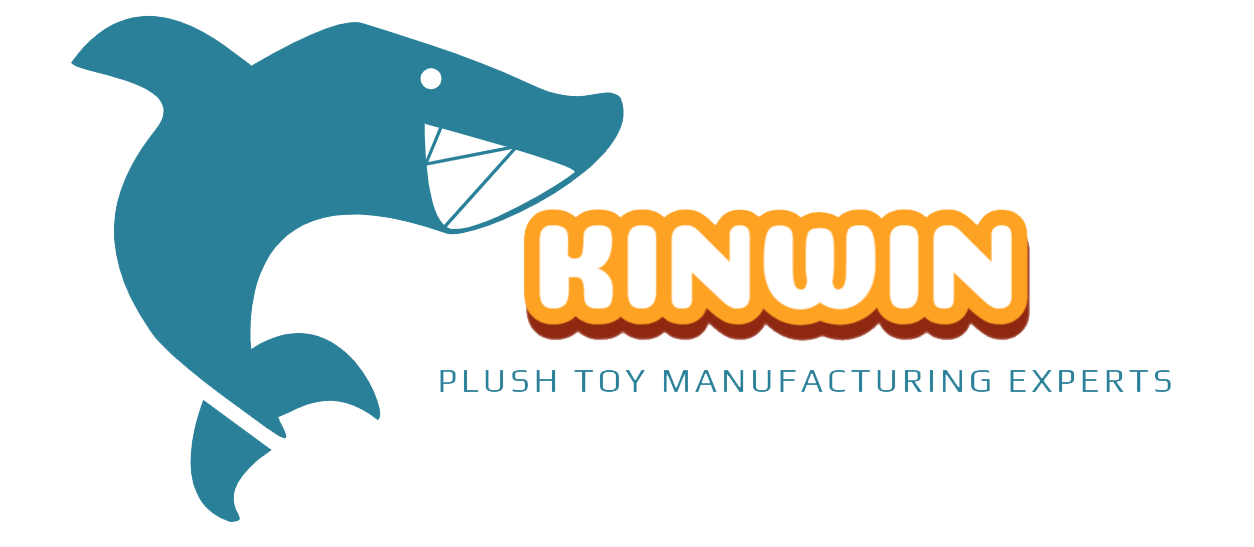You know that moment when your kid’s favorite plush toy looks like it’s been through a mud-wrestling match? Those cuddly buddies are total germ magnets, soaking up everything from sticky fingers to sneezes. Keeping them clean isn’t just about making them pretty—it’s about keeping your little ones healthy and those toys huggable for years. To disinfect plush toys, hand-wash with mild eco-friendly detergent, machine-wash durable ones on a gentle cycle, steam delicate toys, or wipe with vinegar, then air-dry thoroughly to kill germs. Picture your kiddo squeezing their sparkling-clean teddy, free of icky bacteria, ready for another epic adventure. Wanna know how to make that happen without wrecking the fluff? Stick with us for the ultimate, no-stress guide to disinfecting plush toys like a pro!
What Are the Risks of Unclean Plush Toys?
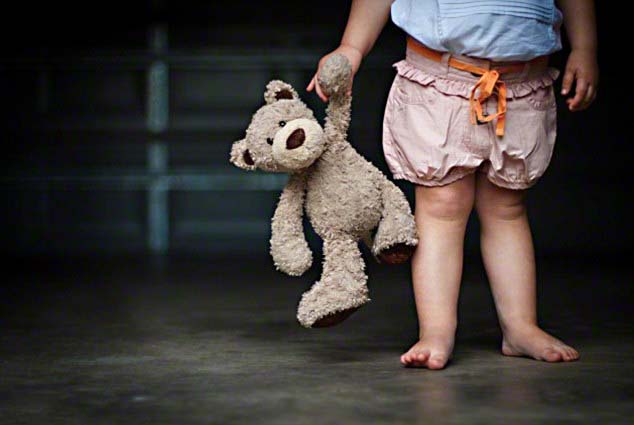
Dirty plush toys can harbor bacteria, dust mites, and allergens, risking illness or allergies. Cleaning them regularly keeps kids safe and toys lasting longer.
Why You Can’t Skip Cleaning Those Plushies
What Kind of Nasties Hide in Plush Toys?
Plushies are like petri dishes for germs—E. coli, staph, or even mold if they get damp. Dust mites and pet dander also pile up, especially in toys that get daily hugs. A 2024 study found 95% of unwashed kids’ toys carry bacteria after a month.
How Do These Germs Mess with Kids?
Bacteria can cause tummy troubles, skin rashes, or worse, while allergens like dust mites trigger sneezing, itchy eyes, or asthma attacks. Kids under 5 are super vulnerable since their immune systems are still leveling up. Clean toys = happy, healthy playtime.
Why Does Cleaning Save the Toy Itself?
Grime and oils from hands break down fabric, making colors fade or seams split. Regular cleaning with gentle methods keeps plushies looking fresh. Our factory uses tough, washable materials so your toys can handle the scrub-down.
Are Some Plushies Germier Than Others?
Toys that get shared, dragged outside, or loved to death collect more gunk. Plushies with electronic bits or glued-on eyes are harder to clean, upping the germ factor. Our factory designs toys with easy-clean surfaces to cut those risks.
Can You Over-Clean a Plush Toy?
Over-washing with harsh chemicals can wear out fabrics or fade colors. Gentle, regular cleaning strikes the balance. Our factory’s plushies are built to handle frequent, eco-friendly cleaning without losing their charm.
Critical Perspective: Are We Freaking Out Too Much About Germs?
Some folks argue a bit of dirt helps kids build immunity, and obsessive cleaning might not be worth it. But harmful bacteria and allergens aren’t a joke, especially for babies or kids with allergies. Our factory’s cleaning-friendly designs make it easy to keep things safe without going germaphobe-crazy.
| Risk Area | Details | Impact |
|---|---|---|
| Bacterial Growth | Toys can harbor E. coli, staph, mold after just weeks of use | Infections, skin rashes, and illness—especially in young children |
| Allergen Accumulation | Dust mites, pet dander, pollen collect in plush fibers | Triggers allergies, asthma, and respiratory irritation |
| Toy Degradation | Oils and dirt break down fabrics, seams, and colors | Shortens toy lifespan, makes toys look and feel worn sooner |
| Hygiene-Sensitive Users | Babies, toddlers, or kids with asthma/allergies are more vulnerable | Health complications if toys are unclean or improperly maintained |
| Hard-to-Clean Features | Electronic components, glued parts, or fuzzy textures trap more dirt and are harder to sanitize | Higher germ load and more delicate care required |
| Over-Cleaning Risk | Excessive washing or harsh chemicals can fade colors and wear out fabric | Damages toy appearance and feel; use gentle, eco-safe methods |
Which Cleaning Methods Are Safe and Effective for Plush Toys?
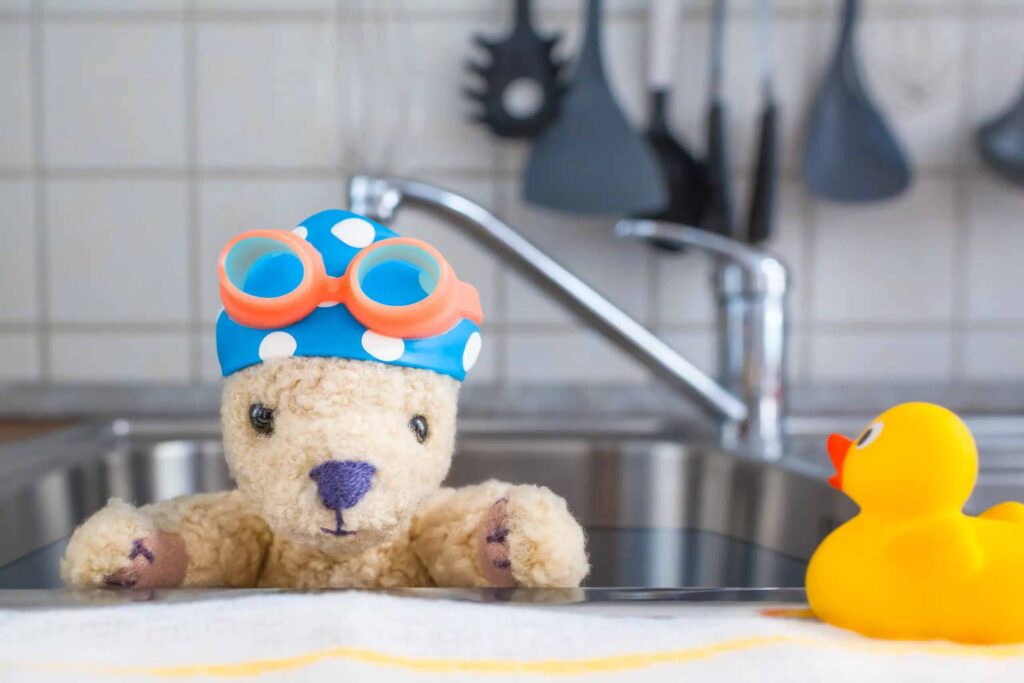
Hand-washing, gentle machine-washing, steaming, or wiping with disinfectant are the best ways to disinfect plush toys. Pick based on the toy’s delicacy and material.
Finding the Perfect Cleaning Vibe
Why’s Hand-Washing a Go-To?
Hand-washing with mild soap is super gentle, ideal for delicate plushies or ones with embroidery. You control the water and scrubbing, so stuffing and seams stay intact. Our factory’s plushies are designed to ace this method.
What’s the Deal with Machine-Washing?
Sturdy plushies can handle a gentle machine cycle in a mesh bag—perfect for busy parents. It’s thorough but can stress glued parts or fragile fabrics. Our factory’s care labels spell out if machine-washing’s cool.
How Does Steaming Get It Done?
Steam cleaners blast germs with heat (160°F+), great for toys that can’t get wet, like those with music boxes. Short bursts prevent soaking. Our factory tests plushies to ensure they can handle steam without a meltdown.
Can Wiping Really Disinfect?
For quick fixes, wipe with a cloth dampened with a 1:1 water-vinegar mix or kid-safe disinfectant spray. It’s surface-level but works for light dirt. Our plushies’ smooth fabrics make wiping a legit option.
What’s the Risk of Doing It Wrong?
Harsh detergents or hot water can shrink stuffing or fade colors. Over-wetting without proper drying invites mold. Our factory’s durable, washable materials reduce these risks, giving you multiple safe cleaning paths.
Critical Perspective: Is There a One-Size-Fits-All Method?
Nope—each method has pros and cons. Hand-washing’s gentle but slow; steaming’s quick but needs gear. Relying on one can miss deep germs or damage toys. Our factory crafts plushies that play nice with all methods, so you’ve got options.
| Cleaning Method | Best For | How It Works | Cautions |
|---|---|---|---|
| Hand-Washing | Delicate, embroidered, or vintage plushies | Mild detergent + lukewarm water + soft cloth or gentle squeeze | Avoid scrubbing or soaking deeply; air dry thoroughly |
| Machine-Washing | Durable, well-stitched plushies | Use mesh bag + gentle cycle + cold water | Not suitable for toys with glued parts, electronics, or fragile fabric |
| Steam Cleaning | Non-washable toys with internal components | Short, hot bursts (160°F+) kill germs without soaking | Use with caution—test fabric for heat resistance first |
| Surface Wiping | Light dirt, quick sanitizing between washes | Use damp cloth with water/vinegar mix or mild disinfectant spray | Doesn’t remove deep dirt; not a substitute for full cleaning |
| UV Sanitizing (Optional) | Plushies with sensitive fillings or rare fabrics | Expose to direct UV light (special boxes or sunlight) for 10–15 minutes | Avoid excessive sun, which can fade colors |
How Do You Hand-Wash Plush Toys Effectively?
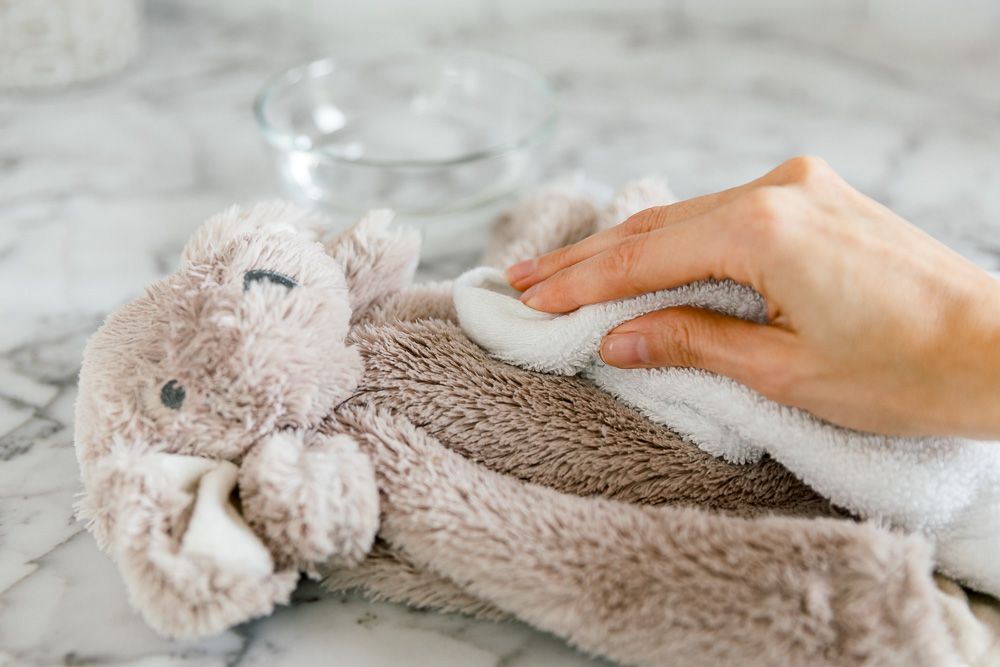
Soak plush toys in lukewarm water with mild detergent, scrub gently, rinse well, and air-dry. This keeps them clean without damage.
Hand-Washing Like a Boss
What’s the Step-by-Step Game Plan?
Fill a basin with lukewarm water (not hot!) and add a teaspoon of mild detergent, like baby shampoo. Dunk the plushie, scrub gently with a soft cloth or sponge, focusing on dirty spots. Rinse until the water’s clear, then press out water without twisting.
Which Detergents Won’t Wreck Your Toy?
Go for hypoallergenic, fragrance-free stuff like Seventh Generation or Ecover. Skip bleach or heavy chemicals—they fade colors and eat at fibers. Our factory tests these detergents to ensure our plushies stay vibrant.
How Do You Dry Without a Mold Party?
Gently squeeze out water, then lay the toy on a clean towel in a breezy spot. Reshape it as it dries to keep that cute look. Avoid direct sunlight—it fades colors. A fan or open window speeds things up. Never toss delicate plushies in the dryer.
What About Stubborn Stains?
Mix baking soda and water into a paste, dab it on stains, and let it sit for 10 minutes before washing. For greasy marks, a drop of dish soap works wonders. Our factory’s stain-resistant fabrics make this step easier.
Can You Hand-Wash All Plushies?
Most can handle it, but check for electronics or delicate bits like glittery accents. Our factory’s clear care labels flag any no-goes, so you’re not guessing.
Critical Perspective: Is Hand-Washing Too Much Hassle?
It’s hands-on and takes 20-30 minutes, which might feel like a chore. But for delicate or heirloom plushies, it’s the safest bet to avoid tears or shrinkage. Our factory’s tough fabrics make hand-washing quick and drama-free, saving you stress.
| Step | What to Do | Tips & Precautions |
|---|---|---|
| 1. Prep the Basin | Fill with lukewarm water and mild detergent (like baby shampoo) | Avoid hot water—it can damage fabric or cause colors to bleed |
| 2. Soak & Scrub Gently | Submerge plushie and use a soft cloth or sponge on dirty areas | Don’t wring or scrub harshly—could distort shape or tear seams |
| 3. Rinse Thoroughly | Rinse with clean water until all soap is gone | Repeat as needed; squeeze gently to remove suds |
| 4. Stain Treatment | Use baking soda paste or a drop of dish soap on stubborn spots | Test on small area first; avoid harsh chemicals |
| 5. Dry Carefully | Gently press out water, reshape, and lay flat on a towel to air dry | Keep away from direct sunlight or heat sources |
| Optional: Speed Drying | Use a fan or place near a window for faster airflow | Never use a dryer for delicate or vintage plush toys |
How Can You Machine-Wash Plush Toys Safely?
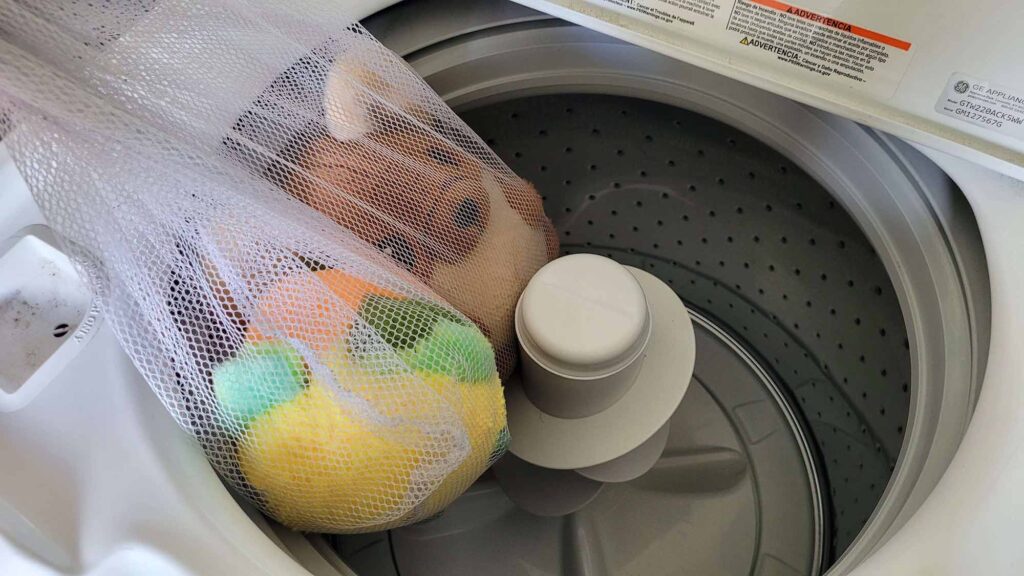
Put plush toys in a mesh bag, use a cold gentle cycle with mild detergent, and air-dry. Always check the care label first.
Machine-Washing Without the Oops
What Prep Keeps Toys Safe?
Check the care label—some plushies aren’t machine-friendly. Pop the toy in a mesh laundry bag to protect seams and details. Remove loose bits like ribbons or hats. Our factory’s labels are super clear to avoid disasters.
Which Machine Settings Are Clutch?
Here’s your cheat sheet:
| Setting | Best Choice | Why It’s Key |
|---|---|---|
| Water Temp | Cold (30°C or below) | Prevents shrinking or color bleed |
| Cycle | Gentle or Delicate | Less stress on seams and stuffing |
| Detergent | Mild, hypoallergenic | Kid-safe, won’t harm fabrics |
| Spin | Low or No Spin | Keeps toy shape intact |
Use a tablespoon of detergent like Method or Ecover for a small load.
How Do You Dry Machine-Washed Plushies?
Air-dry on a towel or rack, reshaping as it dries to keep the toy’s form. If the label says it’s okay, tumble-dry on low with tennis balls to fluff stuffing. Our factory’s plushies dry fast to avoid mold.
Which Toys Should Skip the Washer?
Plushies with batteries, glued eyes, or delicate embroidery are a no-go—hand-wash or steam instead. Vintage or handmade toys might not survive the spin. Our factory flags these on labels to keep you safe.
What If Something Goes Wrong?
If a seam pops, hand-stitch it with a needle and thread. For shrinkage, reshape while damp. Our factory’s durable designs minimize these risks, making machine-washing a solid option.
Critical Perspective: Is Machine-Washing the Easy Way Out?
Some say it’s lazy compared to hand-washing’s care, but for sturdy plushies, it’s a time-saver. The trick is knowing your toy’s limits. Our factory’s washer-friendly plushies make it a no-brainer for busy families.
How Do You Clean Plush Toys Without Washing Them?
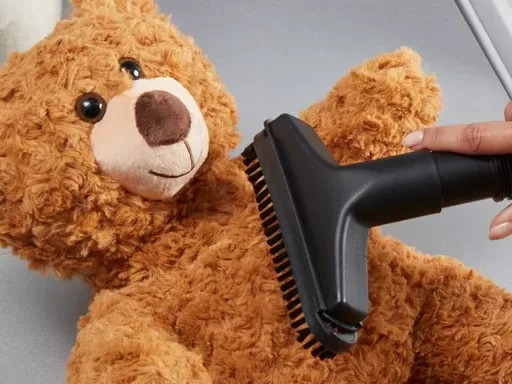
Steam, wipe with a vinegar-disinfectant mix, or use UV light to clean plush toys without washing. These are great for delicate toys.
No-Wash Cleaning Tricks
How Does Steaming Zap Germs?
A handheld steam cleaner hits 160°F+, killing germs without soaking the toy. Hold it 6-8 inches away, using 5-second bursts. It’s perfect for plushies with electronics. Our factory ensures our toys can handle steam like champs.
What’s Up with Wiping Down Toys?
Mix equal parts water and white vinegar, or grab a kid-safe disinfectant spray like Force of Nature. Dampen a soft cloth, wipe dirty spots, and let air-dry. It’s quick for surface grime but doesn’t deep-clean.
Can UV Light Really Work?
UV-C wands or sanitizing boxes kill 99% of germs in 1-2 minutes, ideal for water-sensitive toys. They cost $30-$100 but are worth it for frequent use. Our plushies are UV-safe, making this a slick option.
Why Go the No-Wash Route?
Delicate plushies—like heirlooms, talking toys, or ones with glitter—can’t handle water. These methods keep them germ-free without damage. Our factory designs toys with non-washing in mind for max flexibility.
How Often Should You Do This?
Wipe weekly for heavy-use toys, steam monthly, or UV-treat every few weeks. Combine with occasional washing for deep cleaning. Our plushies’ smooth fabrics make these methods super effective.
Critical Perspective: Are No-Wash Methods Legit?
They’re great for quick disinfecting but don’t tackle deep dirt like washing does. Steaming’s solid but needs equipment; UV’s pricey. Our factory’s versatile plushies let you mix and match methods for the best results.
| Method | How It Works | Best For | Precautions |
|---|---|---|---|
| Steam Cleaning | Use a handheld steamer at 160°F+ from 6–8 inches away in 5-sec bursts | Plushies with electronics or glued parts | Don’t oversaturate; avoid plastic eyes or voice boxes directly |
| Wipe with Vinegar | Mix 1:1 water & white vinegar or use kid-safe disinfectant on soft cloth | Surface stains, light use toys | Spot-test first to avoid discoloration |
| UV Light | Use a UV-C wand or box for 1–2 minutes to kill 99% of germs | Water-sensitive or vintage toys | Ensure full exposure; avoid looking at UV directly |
| Dry Brushing | Gently brush plush with a soft bristle brush to lift dust and dirt | Heirloom plush, velvet or faux fur | Works only on surface dirt; no sanitizing effect |
What Role Does Sustainability Play in Plush Toy Cleaning?
Use eco-friendly detergents, recycled fabrics, and low-water cleaning to make plush toy care sustainable. This saves the planet and keeps toys fresh.
Green Cleaning for Happy Plushies
What Makes a Detergent Eco-Friendly?
Biodegradable options like Ecover, Method, or Mrs. Meyer’s skip toxic chemicals, protecting kids and waterways. They clean just as well as harsh stuff. Our factory tests these to ensure our plushies stay bright and safe.
How Do Sustainable Fabrics Help Cleaning?
Our plushies use recycled polyester (12 bottles saved per toy!) and organic cotton, which hold up to frequent cleaning without fraying. In 2024, 28% of plush toys used green materials, up from 25%, per Textile Exchange.
What Green Practices Save the Day?
Low-water hand-washing or cold machine cycles cut energy use. Spot-cleaning instead of full washes saves water and preserves fabrics. Air-drying skips the dryer’s carbon footprint. Our factory’s designs make these easy.
Why Are Parents Into This?
A 2024 Nielsen survey says 75% of parents want eco-friendly products, especially for kids. Green cleaning vibes with 2025’s sustainability wave, letting you play guilt-free. Our plushies are built for this eco-lifestyle.
Any Real-World Green Wins?
In 2024, we made a batch of plushies for a preschool using 100% recycled fabrics, designed for easy eco-cleaning. They lasted through a year of kid chaos, proving green’s tough. Your custom plushie could be next.
Critical Perspective: Is Eco-Cleaning All It’s Cracked Up to Be?
Some “green” products are overhyped, with weak cleaning power or shady claims. Check for certifications like EPA Safer Choice or GOTS. Our factory’s audited green practices deliver real impact, from materials to cleaning tips.
| Sustainability Focus | What It Means | Benefits | Factory Example |
|---|---|---|---|
| Eco-Friendly Detergents | Biodegradable, non-toxic (e.g., Ecover, Method, Mrs. Meyer’s) | Safe for kids, waterways, and fabrics | All detergents tested on plushie durability & colorfastness |
| Green Fabric Materials | Recycled polyester, organic cotton, hemp | Withstand frequent washes, reduce microplastic pollution | 12 plastic bottles saved per plushie; 28% green fabric usage |
| Low-Water Cleaning Methods | Spot cleaning, hand-washing, cold machine cycles | Lower energy & water consumption | Plushies designed for cold washes and quick drying |
| Air-Drying | No tumble drying—use towel + fan or sunlight-free air-dry setup | Reduces electricity use, protects toy shape and texture | Plush toys hold shape during natural drying |
| Certifications to Look For | GOTS (organic textiles), GRS (recycled content), EPA Safer Choice detergents | Ensures real sustainability, not just marketing claims | Factory follows certified green supply chain standards |
Conclusion
Disinfecting plush toys is like giving them a superhero makeover—zapping germs, keeping kids safe, and making those cuddly pals last through countless adventures. Whether you’re hand-washing, steaming, or wiping down, this guide’s packed with pro hacks to keep your plushies fresh and huggable. At Kinwin, we’re all about crafting eco-friendly, easy-to-clean plush toys that spark joy without the worry. Want a custom plushie that’s tough, green, and a breeze to clean? Hit us up at [email protected] to get a quote or check out our sustainable lineup. Let’s make sure those fuzzy friends stay ready for every hug!
